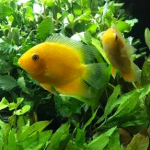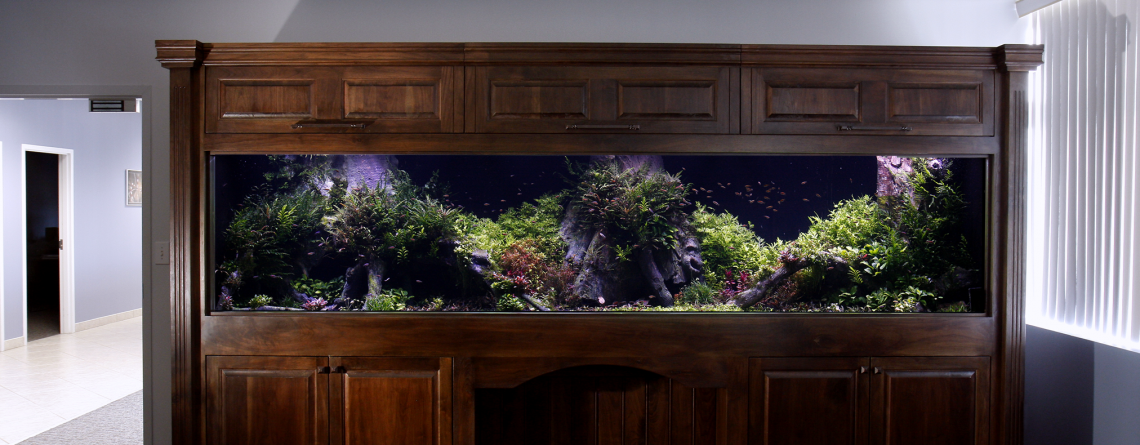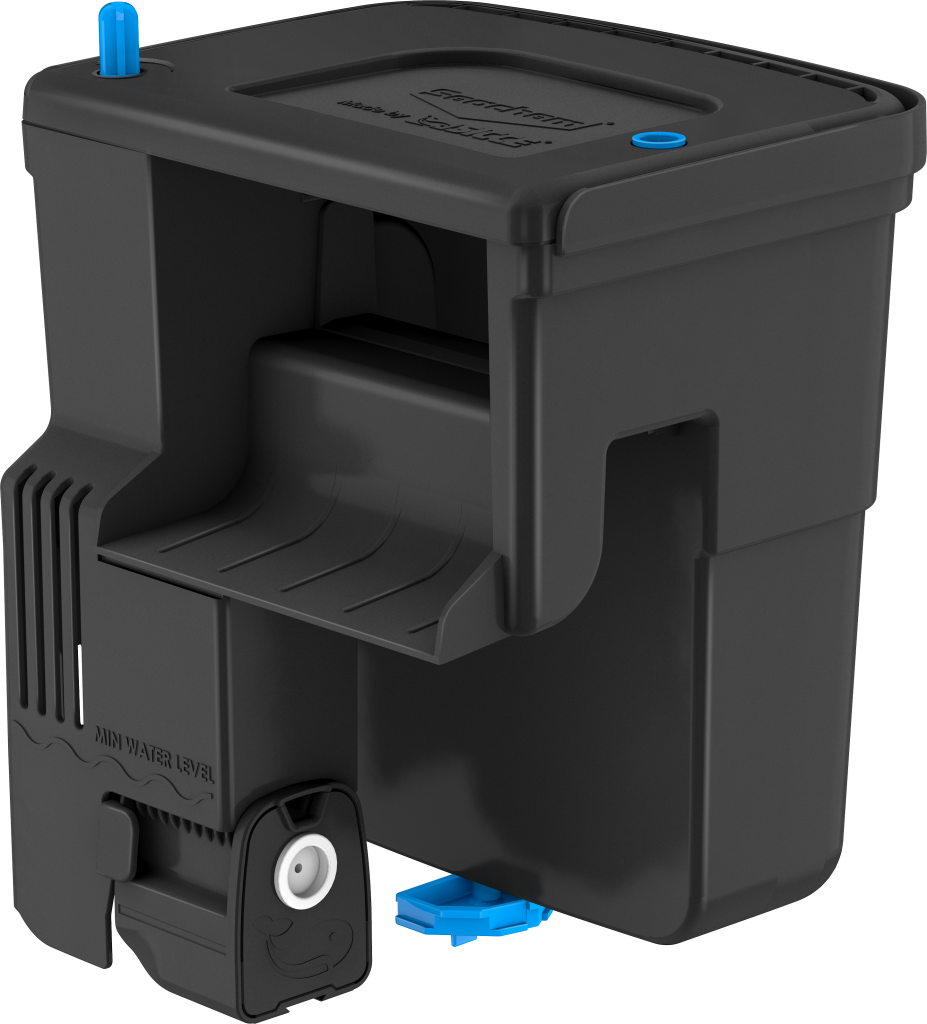Setting up an Office Aquarium
So the bill has come due. Three weeks ago you uttered the phrase “I love fish” within hearing of your boss, and now not only does the office need an aquarium, but also you are just the person to set it up and take care of it. You’ve kept a few bettas in your life and maybe an ill-fated goldfish when you were in grade school, but you’ve never set up something worthy of the lobby before. Well, don’t panic! Here is Seachem’s guide to setting up an office tank.
The Tank

The key to a great office tank is setting up properly so that the tank will be easy to maintain and will look great long after the initial setup. In this article, we’ll be covering the basic community tank, which is the easiest and least expensive aquarium to maintain. As you gain more experience with fishkeeping, you might be interested in keeping more advanced planted or saltwater aquariums, which are a joy to set up and maintain, but require a bit more investment than a freshwater community aquarium.
The Space
Take a look at the space available to you. Aquariums tend to be easiest to set up and maintain when they are against a wall near an outlet, out of the path of direct sunlight. Measure the space where you plan to put the tank and see what size tank will fit in that space (you can look up standard fish tank dimensions online to choose your tank). Take note of the tank volume and dimensions so you can reference it for buying equipment later.
The Plan
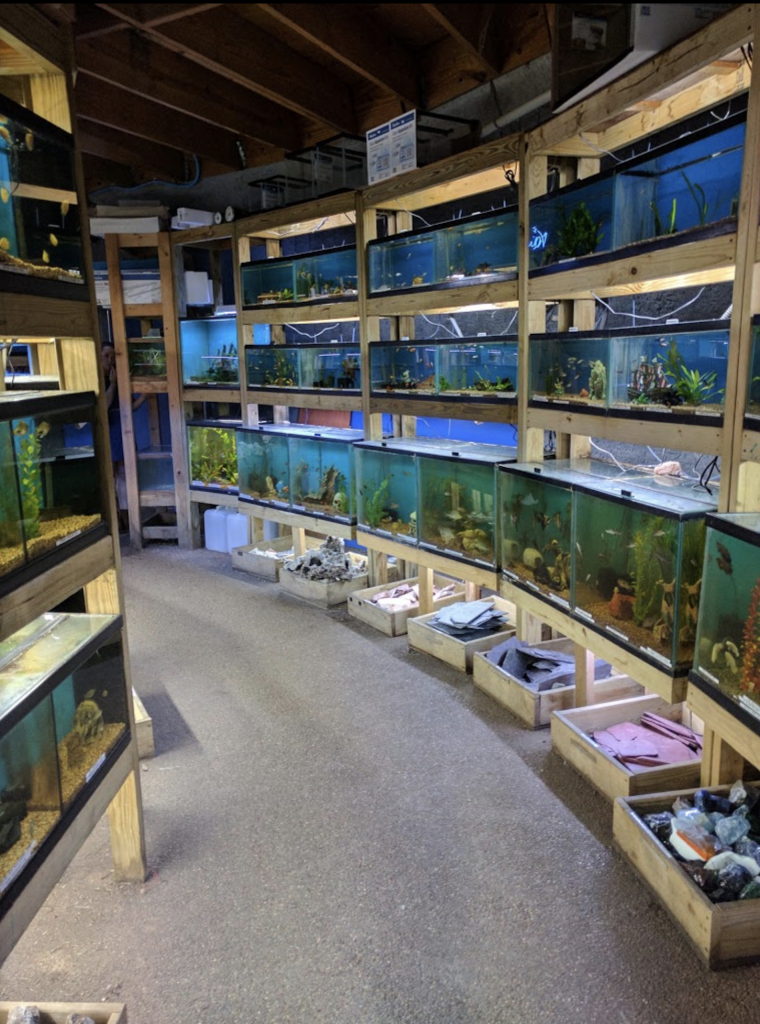
Now that you know what size tank you’ll be working with, visit a few reputable dealers of freshwater fish. Take note of the adult size and social requirements of the fish, and plan your tank populations accordingly. Fish are happier, healthier, and livelier when they are kept in a tank that is large enough and in appropriate social groups of their own species that make them feel comfortable. Plan for about a gallon of water per inch of adult fish, and choose fish species that won’t be too different in size and aggression levels.
It’s also important at this point to match your fish’s water requirements. Different fish require different water parameters, so make sure that you can house all your fish in the same water with no conflicts. This will also be a good time to bring a sample of your water to your local independent fish store to see what (if anything) needs to be added to your water to make it suitable for keeping a freshwater community tank. Most freshwater community aquariums are kept at the following levels: pH 6.5-7.5, KH 3-5 dKH, GH 3-5 dGH. If your tap water is significantly out of range, you’ll need to plan to purchase supplements and buffers to correct it.
The shopping list
Now that you know what kinds of fish you want to keep, your intended tank size, and your water parameters right out of the tap, it’s time to plan out your shopping list. First, you’ll need to consider your hardware. Seachem recommends the following:
- Tank
- Tank Stand
- Light
- Filter (We recommend the Tidal filter, as this has an exceptional flow rate, is easy to care for, and gives you lots of options for types of filter media.)
- Heater
- Bucket
- Siphon
- Net
- Aquarium-safe scrubber pad (We recommend the Seachem Algae Scraper)
- Thermometer
- Timer for the light
- Test kits to monitor pH, KH, ammonia, nitrite, and nitrate levels.
Once you have a plan for your hardware, it’s time to consider your decorations. Substrate is absolutely essential for an ordinary fish-only tank since it provides a lot of surface area for beneficial bacteria colonies, but the exact type you use is up to you! Seachem recommends Flourite gravel.
Fish like to have decorations in their tank to explore and use for cover, but they don’t have much opinion on what form those decorations take. As long as your decorations do not have any sharp edges that could hurt a fish or small holes that a fish can get caught in, feel free to choose decorations according to your own aesthetic preference!
Remember how you asked the experts in your local fish store about your water chemistry? That will tell you what kinds of supplements your tank needs in order to be healthy. Here are the basics for a freshwater community tank:
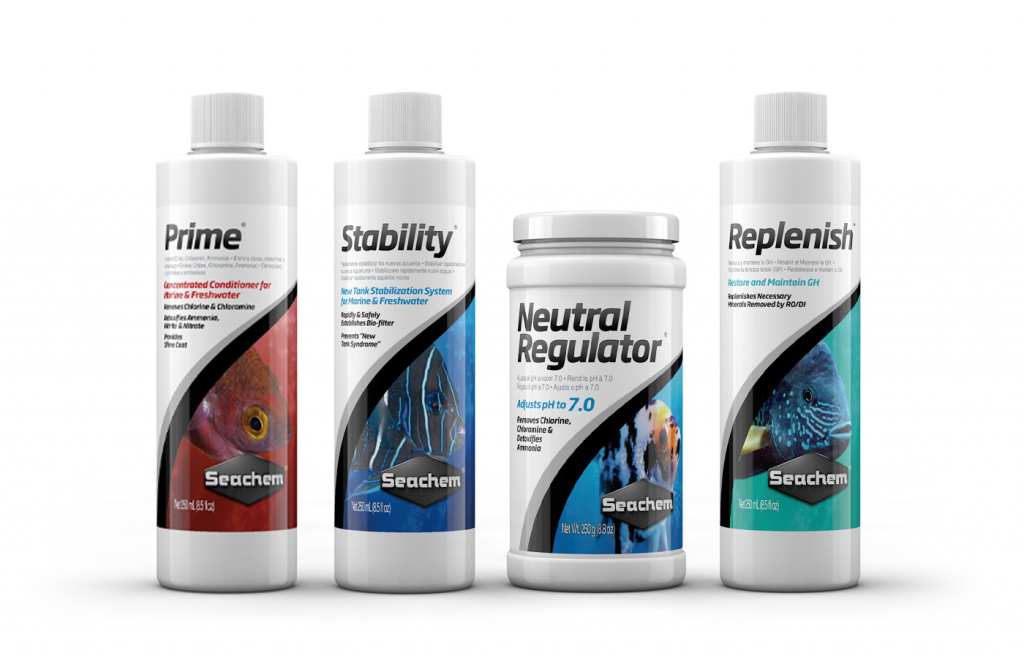
- Prime to remove chlorine and chloramine
- Stability to jump start the cycling process
- Neutral Regulator to control the pH
- Replenish to raise the GH (if needed)
The last thing you will need is food for your fish. Many fish will eat a wide variety of foods, but it is best to pick foods that suit their natural diet and provide all the nutrients they need. We recommend the NutriDiet line of fish foods, particularly NutriDiet Tropical (for the community tank), NutriDiet Chlorella (for herbivores), and NutriDiet Shrimp (for carnivores).
The Setup
You are armed with your supplies and a foundation of knowledge about fishkeeping, so it is time to set up the aquarium! Give yourself a few hours to finish the setup, and dress in clothing that you don’t mind getting wet. Here’s a few tips to make this process as easy as possible:
- Set up all your hardware and check that the tank is stable before adding decorations, and add all your decorations before filing the tank
- Place a bowl or plastic bag in the tank to divert the stream of incoming water and keep it from stirring up the substrate
- Add all your supplements, turn on all your hardware, and let it run for at least a day before moving forward – you need to make sure everything is working!
The Cycle
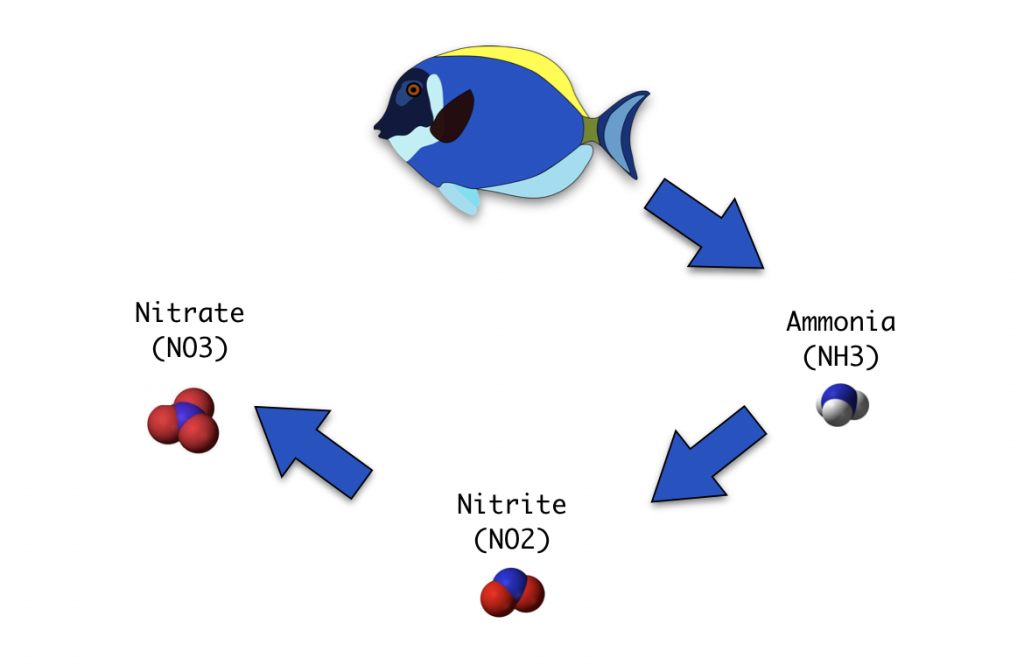
Aquariums go through a process called “cycling” as the beneficial bacteria colonies that consume fish waste develop in the aquarium. This process can take anywhere from several weeks to several months, and until it is over, the fish are in danger from toxic waste buildup. If your tank is cycling while there are fish in the tank, make sure to add Prime every 48 hours to protect the fish from these toxic chemicals.
Seachem has a guide to cycling your aquarium that is available Here
Maintenance and Care
Once your tank is fully cycled, you can start adding fish! It’s best to add fish just a few at a time to avoid overwhelming the developing bacteria colonies. Feed your fish about as much as they can eat in 3-5 minutes once per day, and make sure to check on your hardware to make sure it is working properly.
Once per week, you’ll need to do a partial water change of about 30% of the water. This helps your pH to stay stable and dilutes down your nitrate (which builds up over time in a cycled tank). This is an ideal time to do some tank cleaning and filter maintenance to keep the tank looking beautiful!
Success!
Congratulations, you’ve done it! You’ve set up an attractive, easy-to-maintain aquarium that will look great long after the first week. Your clients and your coworkers will thank you!
